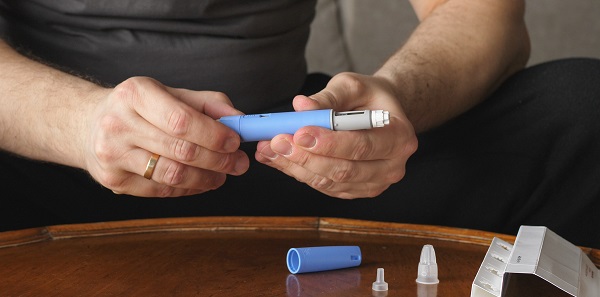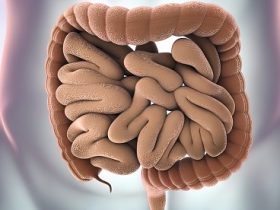Amy Clouse, MD, FAAFP, Clinical Associate Professor, Family, and Community Medicine, Sidney Kimmel Medical College at Thomas Jefferson University, Associate Residency Director, Abington – Jefferson Health Family Medicine Residency Program, and Patricia H. Montesinos, MSN, APRN, FNP-BC, BC-ADM, CDCES, Medstar Diabetes Institute, in their talk at the recent Pri-Med East Conference, held in Boston, discussed how mealtime insulin (MTI) is beneficial for PWD and how should PCPs approach this therapy intensification beyond basal insulin.
Most primary care providers (PCPs) are uncomfortable advancing therapy beyond basal insulin, do not assess the adequacy of basal insulin therapy, or fail to recognize a person with diabetes (PWD) who would benefit from therapy advancement. The objectives of their talk were to 1) determine when therapy intensification beyond basal insulin is favorable and how to progress to mealtime insulin, 2) demonstrate improved confidence in the ability to prescribe mealtime insulin (MTI), 3) compare and contrast available MTI formulations, including their safety, efficacy, and dosing, and 4) assess how to best employ the diabetes healthcare team and diabetes technology to improve care for PWD on insulin therapy.
When to consider medication intensification beyond basal insulin
The following parameters must be considered for considering therapy intensification beyond basal insulin. These include basal insulin dose >0.5 u/kg/day, postprandial glucose (PPG) >180 mg/dL, HbA1c not at goal despite achieving the target fasting blood glucose (FBG) level, bedtime-morning blood glucose (BG) differential ≥50 mg/dL, high pre/postprandial glucose differential, hypoglycemia (aware or unaware), and high glycemic variability.
Importance of postprandial glucose
Postprandial glucose (PPG) is an important indicator of glycemic control. Long-term glycemic goals cannot be achieved by controlling FBG levels alone. Health risks of elevated PPG include increased microvascular and macrovascular complications (including cardiovascular disease in type 2 diabetes mellitus (T2DM)), reduced health-related quality of life, and increased healthcare resource utilization. It is reported that clinicians often ignore the contribution of PPG to HbA1c5. PPG control is a key component of diabetes management and provides an opportunity to improve glycemic control and decrease complications of diabetes. Furthermore, educating PWD on PPG monitoring may help improve the day-to-day management of diabetes and reduce healthcare costs.
ADA guidelines for initiating MTI
The speakers highlighted the guidelines prescribed by the American Diabetes Association to initiate MTI. The PCPs should start with one dose with the largest meal of the day or the meal with the greatest PPG excursion (Initial dosing: 4 units per day or 10% of the basal insulin dose. If HbA1c <8%, consider lowering the basal insulin dose by 4 units per day or 10% of the basal dose). PCPs should then do titration (i.e., increase the dose by 1-2 u or 10%-15% twice weekly, and if hypoglycemia occurs without a clear cause, lower the dose by 10%-20%). There are three different MTI formulations. These include short-acting insulin (insulin regular like Humulin R and Novolin R), rapid-acting insulins, and ultra-rapid-acting insulins.
Initiation of ultra-rapid-acting insulin and its benefits.
Ultra-rapid-acting insulin may be subcutaneous or inhaled. Subcutaneous ones like ultra-rapid lispro, fast-acting insulin aspart can be injected subcutaneously into the abdomen, upper arm, thigh, or buttocks and should be administered at the meal’s start or within 20 minutes after the start of the meal. On the other hand, inhaled ones, like technosphere inhaled insulin, are administered orally using an inhaler at the beginning of a meal. Before initiating, PCPs must perform a detailed medical history, physical examination, and spirometry (FEV1) in all patients to identify potential lung disease. They should repeat FEV1 in 6 months and then annually.
New ultra-rapid-acting formulations provide flexible administration timing that aids patients’ struggles with traditional MTI. Inhaled insulin (Afrezza) can be taken at the start of a meal and has demonstrated improvements in PPG, thereby reducing the injection burden.
Which patients are good candidates for switching to ultra-rapid-acting insulin?
Patients who have trouble taking their mealtime insulin 15-20 mins before eating or want more flexibility, patients with insulin pumps, patients with elevated PPG who are motivated to improve glycemic management, and patients with delayed postprandial hypoglycemia (rapid kinetics decrease the risk of delayed postprandial hypoglycemia is considered a suitable candidate for switching to ultra-rapid-acting insulin.
Barriers to starting MTI
Patient concerns around MTI should be addressed. These include weight gain, hypoglycemia, and the complexity of the regimen. PCP-related barriers also exist around MTI. These include a need for more knowledge about MTI options/regimens and a lack of time to manage complex insulin regimens.
Overcoming barriers: Utilize the diabetes care team and incorporate technology.
Currently, only 55% of PWD receive formal diabetes education. All PWD should have access to diabetes education. Registered nurses, dieticians, and pharmacists are the key primary instructors for diabetes education. They are responsible for designing the curriculum and assisting in diabetes self-management education delivery, according to the literature. Diabetes care and education specialists are trained to help educate people with diabetes, create goals for their diabetes management, and formulate plans to help reach those goals.
The use of diabetes technology (like insulin pumps, connected pens and caps, mobile apps, and continuous glucose monitors) has potential benefits. They help increase PWDs’ confidence in diabetes self-management, help reduce missed insulin doses, provide accurate and real-time data to help PWD and their healthcare team individualizes treatment plans and can help improve HbA1c and reduce episodes of hypoglycemia.






